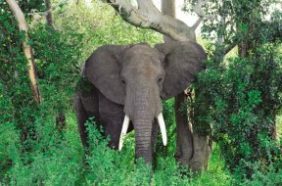Gene sleuths track down ivory sources
DNA testing of a tusk's ivory can help identify where the elephant came from.
By Emily Sohn
Who stole my elephant? That’s a question you probably don’t hear every day. It’s a big question in Africa, though, where poachers still kill elephants for their valuable ivory tusks.
Killing elephants and trading ivory are illegal, but it’s hard to hunt down the people who break the laws. Now, scientists say they have found a way to help solve the problem. They’re using DNA to track ivory to its source.
 |
|
Investigators could use genetic clues to trace the ivory in tusks back to the population of elephants that produced it.
|
All animals, including people, have a set of structures in each cell called chromosomes. Chromosomes contain genes. Genes are made of molecules known as DNA. DNA holds all the information necessary to keep cells and the body working.
Although all elephants share roughly the same type of DNA, there are small differences in the DNA among elephants in different regions of the world. By carefully analyzing an elephant’s DNA, it’s possible to tell area that elephant came from.
So, researchers from the University of Washington in Seattle collected 399 DNA samples from 28 elephant ranges in 16 countries in Africa. They took the DNA from scat or animal tissue.
Using these data and other information, the researchers created a genetic map of Africa. The map shows which types of elephant DNA come from which areas. Now, when officials nab a piece of ivory, they can figure out where the elephant came from by comparing the ivory’s DNA to the various types of DNA recorded on the map.
The scientists say their technique has an 80 percent chance of being accurate enough to point out, within 1,000 kilometers, where an elephant came from. As they collect more samples, the map will get even more accurate.
Figuring out where ivory came from is the first step toward figuring out who killed the elephant. For elephants, the research might finally mean a better night’s rest.







